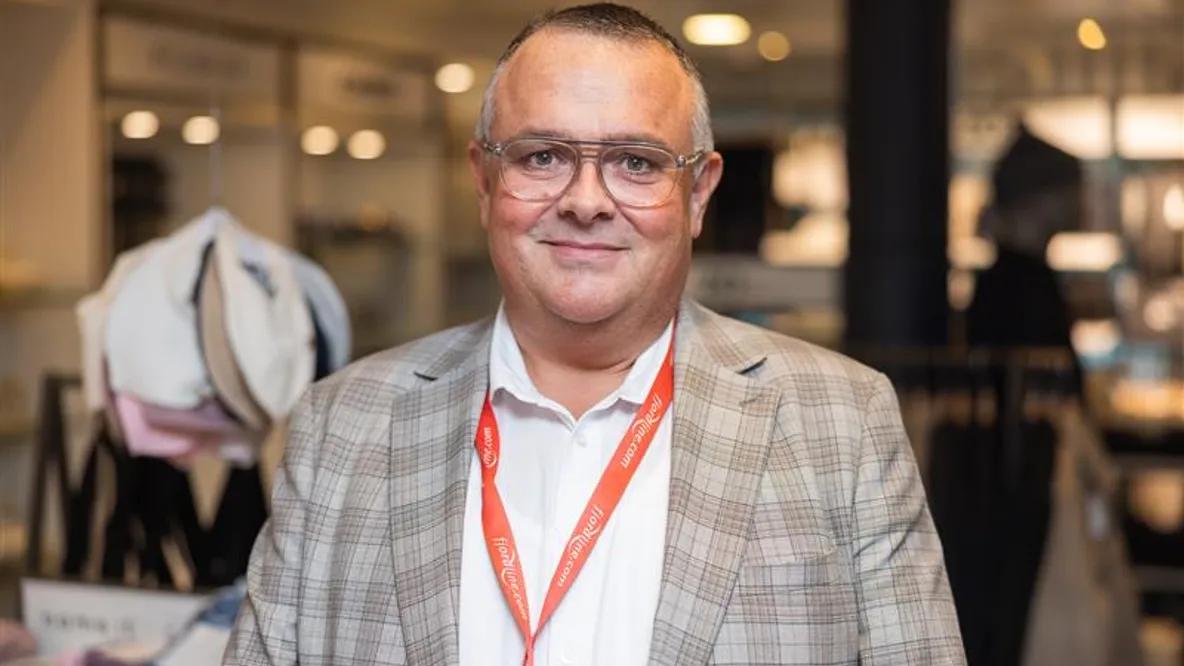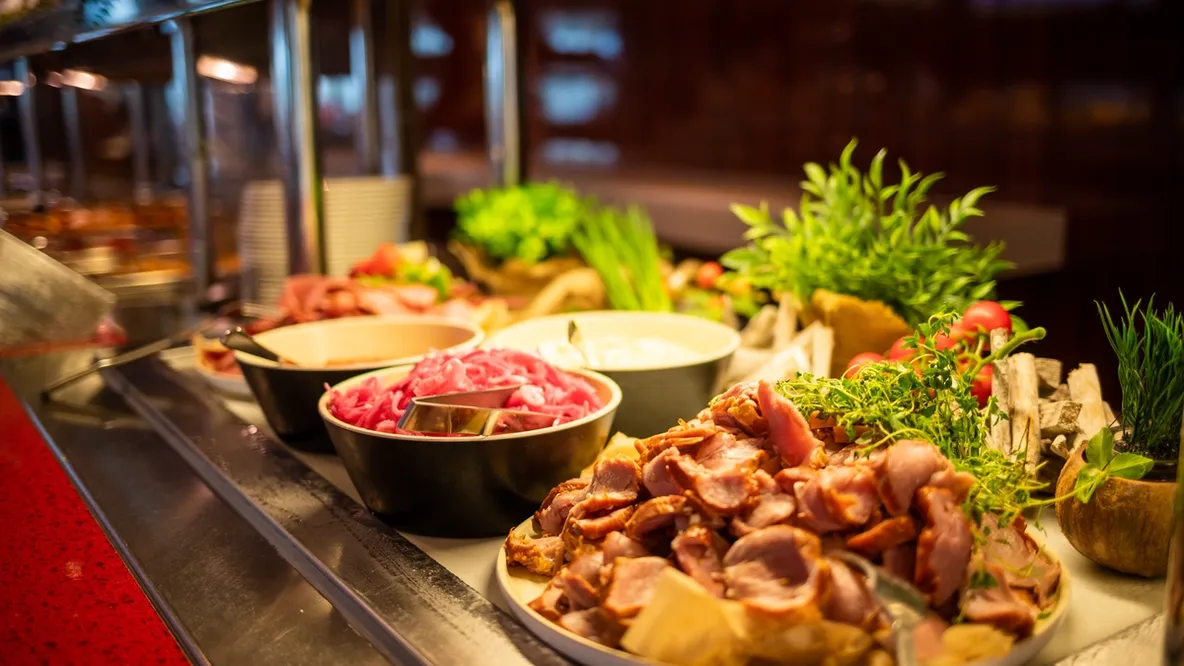How Fjord Line Turned Food Waste into Environmental Gains
By preparing all meals on board, Fjord Line not only ensures high quality in its restaurants – it also enables the company to adapt supply to demand in real time. On top of that, several new measures have been introduced to minimise food waste. The result? A reduction of 50 tonnes per year!
“It’s about changing the mindset of both employees and guests through many small steps that together have a major impact,” says Morten Bo Poulsen, Head of Onboard Sales & Service at Fjord Line.
And he speaks from experience. Having overseen the implementation of various initiatives, he has also seen the results. Measurements from the last four months show clear improvements.
“The data we’ve gathered recently shows that food waste has been reduced by an average of 55 grams per passenger – small steps that together represent a significant environmental gain,” says Poulsen.
For a ferry company that transports around 900,000 passengers annually, every gram not thrown in the bin adds up. A reduction of 55 grams per person amounts to nearly 50 tonnes less food waste every year – a solid step towards the fully green future Fjord Line is steadily working towards.

“Systematic weighing and measurement of all food waste on board, combined with monthly evaluations across the fleet, give us solid evidence that these measures are working,” Poulsen says, adding:
“At the same time, the initiatives also provide the welcome side effect of reduced operating costs.”
When one kilogram of food waste costs around NOK 80, the gains are certainly noticeable.
Higher Food Quality and Less Waste
The turning point came when the company made what seemed like a simple change: they moved the entire production of sandwiches and salads back on board the ships.
“Previously, this food production was outsourced, and we had to purchase a minimum quantity of units. That’s tricky when you don’t know whether guests will eat in the buffet restaurant or just want a sandwich,” Poulsen explains.
By regaining control of production, the ships can now adjust on the go based on actual demand, rather than being tied to suppliers’ minimum order requirements.
Producing sandwiches and salads in-house allows the ships to prepare these items fresh as needed, rather than relying on pre-made deliveries. This means fresher sandwiches and salads, made according to demand.
The result is not only reduced waste, but also higher quality and fresher food for guests. The ships can now produce continuously instead of being subject to fixed minimum deliveries.
“On Stavangerfjord and Bergensfjord, we’ve also established a system where the LNG ships deliver fresh products to the FSTR catamaran – both in Hirtshals in the morning and in Kristiansand upon arrival,” says Poulsen.
Changing the Onboard Mindset
But the green transition hasn’t stopped at production – the buffets have also undergone a quiet revolution.
“Instead of guests helping themselves to, say, smoked salmon from large trays, they now get salmon with tarragon cream served in portions. We’re trying to gradually change the way we think ourselves, but also to inspire our guests to think differently,” he explains.
These smaller portions, combined with more frequent refills and rotation of the trays, have reduced buffet waste by 5–8 grams per person on their own.
Table signs with the message “Please help yourself, but only take what you can eat” raise awareness among guests about their own consumption. And the response? Overwhelmingly positive – most guests recognise the environmental benefits of the approach, and not least the added bonus of even fresher, freshly prepared food.

Separating Biodegradable and General Food Waste
While many ferry companies focus solely on reducing waste, Fjord Line has found creative solutions for what remains unavoidable. Secret weapon number one? A food waste grinder that turns scraps into “fish food”.
“Pure food waste that is ground up can be released 12 nautical miles from shore and becomes nourishment for fish and other marine organisms. We’ve increased that share by about 20 percent,” explains Poulsen.
The system is simple: the food waste goes into a tank, is mixed with water, and released into the sea at a safe distance from land. Waste that can’t be ground – like bones – is delivered as regular waste when the ship docks.
Onboard Waste Sorting Across the Fleet
Alongside the food waste initiatives, Fjord Line is rolling out onboard waste sorting across its entire fleet. The pioneering ship Fjord FSTR already has the system in place, and now it’s the LNG ships’ turn.
“We’re subject to Danish regulations on waste sorting, and we’re working to implement this across all our ships,” says Poulsen.
The challenge is greater on the LNG ships, which use compactors to compress waste. This makes it more complicated to implement sorting systems compared to the FSTR, which doesn’t have such equipment.
Still, the goal is clear: by the first quarter of 2026, all ships must have a waste sorting system that can handle all types of waste – including clean plastic, mixed plastic, metal, cardboard, ground food waste, and residual waste to be delivered onshore.
A Green Commitment on All Fronts
Reducing food waste and improving waste sorting are just small parts of Fjord Line’s broader green transformation. From the first quarter of 2026, the company’s main food supplier will deliver by electric truck – and even the pizza boxes have had a green upgrade, now made from recycled cardboard.
“We’re constantly working to become even greener. We’re conscious of the fact that we have a responsibility in a world that needs more sustainable solutions,” says Poulsen.
This green thinking extends to the staff too. Chefs must rethink how they prepare and present meals. Bakers bake smaller batches more frequently to avoid large amounts of bread going to waste. On the final departure of the day, Fjord Line sells leftover food to be eaten on board at a reduced price – just like many land-based restaurants now do.
Despite the new goals and promising results, Poulsen is clear that this is only the beginning.
“We still have a way to go to fulfil our environmental ambitions, but the results show that we’re on the right track,” concludes Poulsen.
Fjord Line’s Food Waste Initiatives
| – 58 grams less food waste per guest in four months |
| – 3 Danish kroner saved per passenger |
| – 20% increase in food waste processed into fish food |
| – 5–8 grams reduction from smarter buffet portioning alone |
| – Goal: Waste sorting on all ships by Q1 2026 |